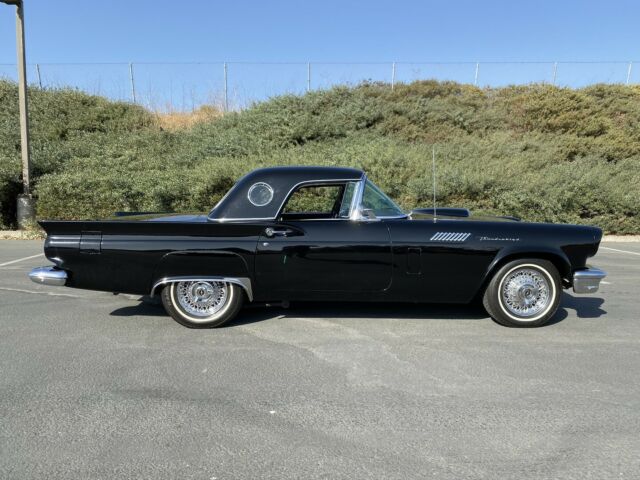
The new Thunderbird had a distinct new styling theme, sharply angular and formal, but extremely low slung. Both the new Thunderbird and the new Lincolns were produced at a new assembly plant at Wixom, Michigan, built as part of a corporate expansion plan to increase the sales of up-market cars (Mercurys, Lincolns, and Thunderbirds). The intent was to allow the maximum interior space in a relatively small exterior package. The four-seat Thunderbird, like the new Lincolns, was designed with unibody construction, eschewing a separate chassis. Therefore, the second generation, introduced for the 1958 model year, was designed as a four-seat car. Market research suggested that sales were inherently limited by its two-seat configuration, making it unsuitable as an only car for families. Giberson never claimed his prize, settling for a $95 suit and an extra pair of trousers from Saks Fifth Avenue.Īccording to Palm Springs Life magazine, the car's final name came not from the Native American symbol as one might expect, but from an ultra-exclusive housing tract in what would later be incorporated as Rancho Mirage, California: Thunderbird Heights.Īlthough the original Thunderbird was successful as an image-builder for Ford, the corporation's executives - particularly Robert McNamara - felt its sales volume was unacceptably small. Stylist Alden "Gib" Giberson submitted Thunderbird as part of a list. Crusoe offered a $250 suit to anyone who could come up with a better name. There was some difficulty in naming the car, with suggestions ranging from the exotic to the ridiculous (Hep Cat, Beaver, Detroiter, Runabout, Arcturus, Savile, El Tigre, and Coronado were submitted among the 5,000 suggestions). Unlike the Corvette, the Thunderbird was never a full-blown sporting vehicle Ford's description was personal luxury car, and the company essentially created this market segment. Crusoe saw a painted clay model on May 18, 1953, which corresponded closely to the final car he gave the car the go-ahead in September after comparing it with current European trends. The concept was for a two-passenger open car, with a target weight of 2525 lb (1145 kg), an Interceptor V8 engine and a top speed of over 100 mph (160 km/h). Hershey took the idea and began working on the vehicle. Walker promptly telephoned Ford's HQ in Dearborn and told designer Frank Hershey about the idea. Walking in the Grand Palais in Paris, Crusoe pointed at a sports car and asked Walker, 'Why can't we have something like that?' Crusoe and Walker met in France in October 1951. Crusoe, a retired GM executive lured out of retirement by Henry Ford II George Walker, chief stylist and a Ford vice-president and Frank Hershey, a Ford designer. Three men are generally credited with creating the original Thunderbird: Lewis D. In 2002, a revived 2-seat model was launched, was available through the end of the 2005 model year. Sales were good until the 1990s, when large 2-door coupes became unpopular production ceased after 1997. Succeeding generations became larger and more luxurious, until the line was downsized in 1977 and again in 1980. In 1958, the Thunderbird gained a second row of seats for greater practicality. Ford described it as a personal luxury car, a description which named a new market segment. It entered production for the 1955 model year as a two-seater sporty car unlike the superficially similar (and slightly earlier) Chevrolet Corvette, the Thunderbird was never sold as a full-blown sports car.

The Ford Thunderbird is a car manufactured in the United States by the Ford Motor Company.


 0 kommentar(er)
0 kommentar(er)
